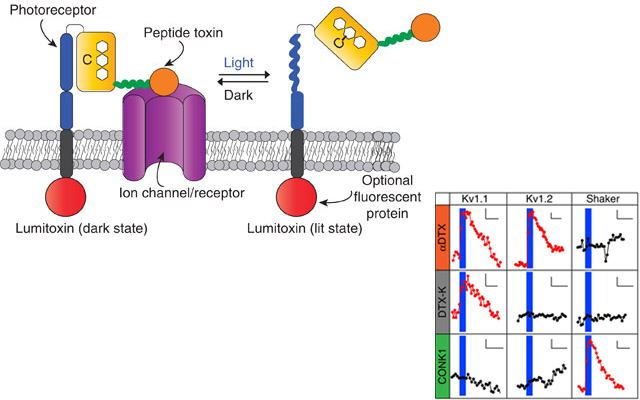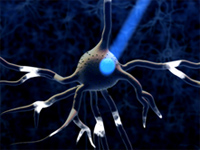
Ion channels are among the most important proteins in biology, regulating the
activity of excitable cells and changing in diseases. Ideally it would be possible
to actuate endogenous ion channels, in a temporally precise and reversible manner,
and without requiring chemical cofactors. Here we present a modular protein
architecture for fully genetically encoded, light-modulated control of ligands that
modulate ion channels of a targeted cell. Our reagent, which we call a lumitoxin,
combines a photoswitch and an ion channel-blocking peptide toxin. Illumination
causes the photoswitch to unfold, lowering the toxin’s local concentration near the
cell surface, and enabling the ion channel to function. We explore lumitoxin
modularity by showing operation with peptide toxins that target different voltage-
dependent K+ channels. The lumitoxin architecture may represent a new kind of
modular protein-engineering strategy for designing light-activated proteins, and
thus may enable development of novel tools for modulating cellular physiology.
